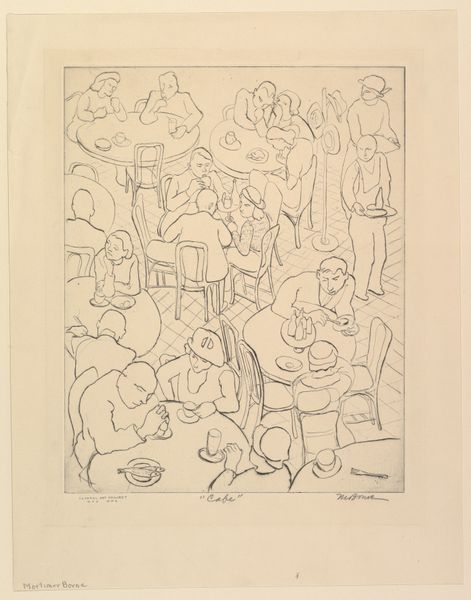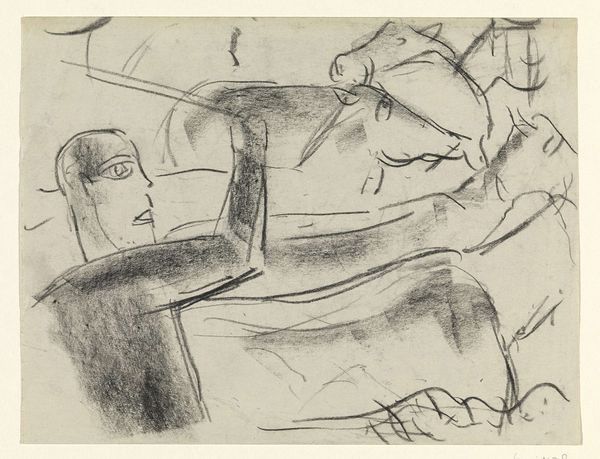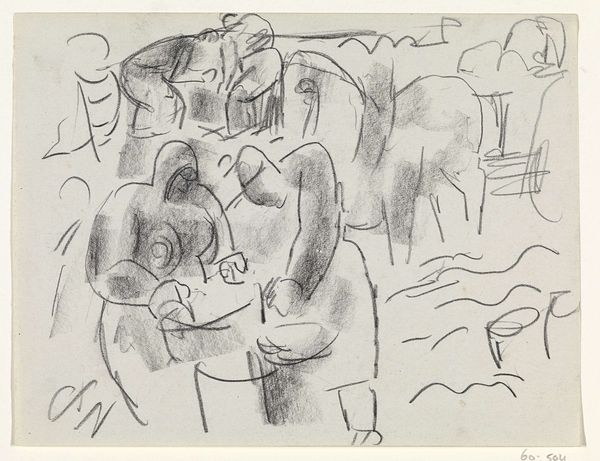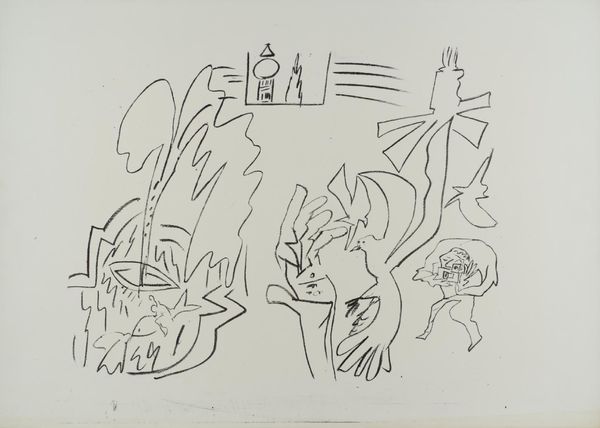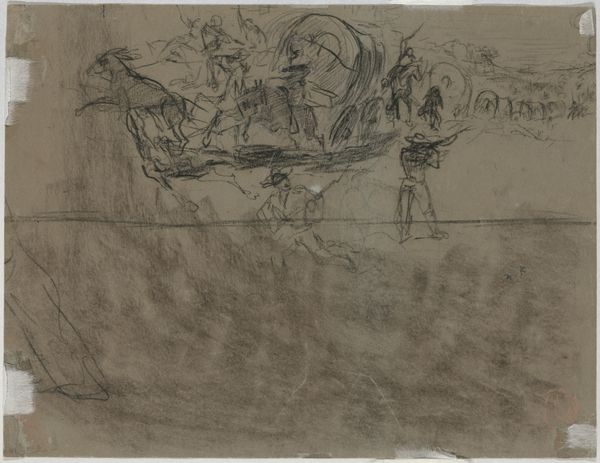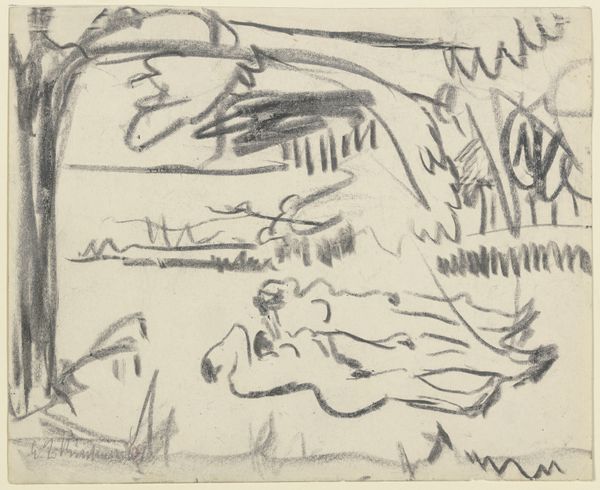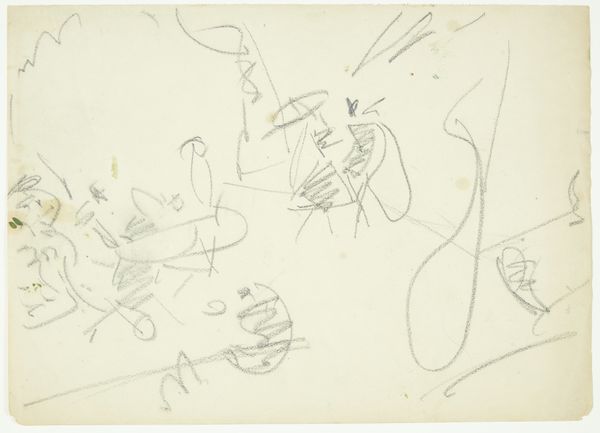
Dimensions: height 103 mm, width 153 mm
Copyright: Rijks Museum: Open Domain
Curator: This ink drawing, titled *Landschap met vee*, or Landscape with Cattle, is attributed to Leo Gestel and was likely made sometime between 1891 and 1941. It’s currently held here at the Rijksmuseum. What’s your immediate response to this piece? Editor: Raw. Almost frantic. The minimal lines on what looks like lined paper, likely torn from a notepad… It gives me the sense of an artist quickly capturing a fleeting moment. I am really drawn to the sense of motion with just very basic tools. Curator: Precisely! Gestel appears to be working within an impressionistic mode, distilling the essence of rural life down to its barest elements. There’s a suggestion of pastoral tranquility here, yet rendered with such economy of line. But even in this hurried, simple scene, we can still spot the church steeple among the other figures, and understand this isn't just an impression of 'nature', it's about community. Editor: Absolutely. Considering that lined paper, I can’t help thinking about the physical act. Was this a preliminary sketch for something grander, perhaps? Or an artwork intended for mass consumption, reflecting accessibility rather than preciousness? The humble materials force us to think about how the everyday could also reflect beauty and artistic merit. Curator: That’s an interesting point. While Gestel engaged with various stylistic movements, including expressionism and cubism, this work hints at a conscious engagement with the Dutch landscape tradition. It brings up all of those images and stories about the role of farmland and faith communities as vital themes in Dutch cultural memory. What do we recall about what we expect 'Dutch Art' to portray and value? Editor: And, because of his deliberate choices regarding materials, what it asks us to consider the value we assign both labor and land. It prompts me to question, how has the shift in materials and modes of production influenced art since the era it was created? Curator: A wonderful question that invites all sorts of future considerations, don't you agree? I love how Gestel provokes reflection about both historical continuities, as well as these shifts in perception and symbolism across time. Editor: Definitely something I’ll ponder as I move on. A valuable reminder to consider what art represents beyond its aesthetic facade.
Comments
No comments
Be the first to comment and join the conversation on the ultimate creative platform.



